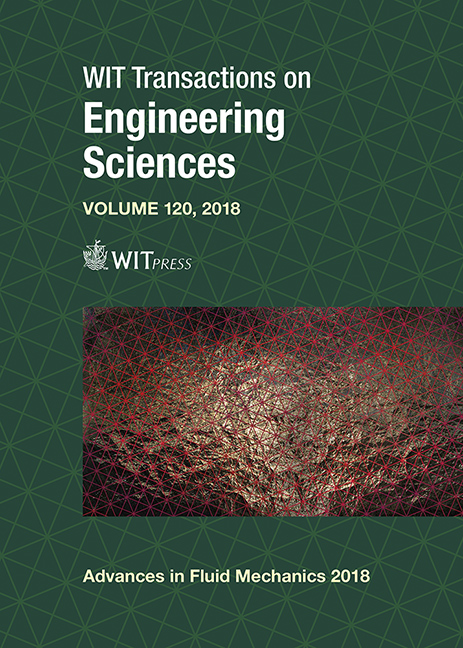A STUDY ON 2-D VECTOR FLOW MAPPING BY ECHO-PIV WITH TOTAL FOCUSING METHOD
Price
Free (open access)
Transaction
Volume
120
Pages
12
Page Range
275 - 286
Published
2018
Size
669 kb
Paper DOI
10.2495/AFM180281
Copyright
WIT Press
Author(s)
TAKUYA KAWACHI, HIDEHARU TAKAHASHI, HIROSHIGE KIKURA
Abstract
Optical techniques have been applied for inspecting inside the primary containment vessels (PCV) in the decommissioning of the Fukushima Dai-ichi nuclear power plant. In this inspection, the following are required: determining fuel debris distribution and identifying location of leakage. Until this data, one of the inspections achieved great progress by capturing several images of fuel debris using a video camera but no information of the leak was unveiled due to non-clear water causing poor visibility of that camera. In order to identify the location of the leak, a new imaging method combining diverging wave (DW) and total focusing method (TFM), named DW-TFM was proposed aimed at echo (ultrasound)-particle image velocimetry (PIV) since an ultrasound can be used in opaque liquid and ultrasonic transducers are generally suited to high radiation levels. This imaging method uses an ultrasonic array sensor and emits a DW spreading in the distance from that sensor. The echo signal of tracer particles where the DW passed is captured by all the elements in the sensor at the same time and an echo image is then reconstructed from those signals using TFM algorithm. The imaging method is expected to obtain echo images covering a wide range in one transmission. Echo-PIV uses consecutive echo images captured at a certain interval to process them with PIV algorithm and obtain an averaged vector flow map (VFM). Summarizing the above, echo-PIV using the DW-TFM has the potential to visualize a wide range of flow behavior in real time and it allows the location of the leak to be found quickly. After investigating the imaging performance of the DW-PIV and developing a measurement system for the suggested echo-PIV, experimental measurement was conducted under a simple condition of water leaking from a tank in order to confirm its applicability. In this test, leaking position could be assumed from the measured VFM and it has good agreement with the actual leakage position. The achievability of the method for the leakage point detection is hereby presented.
Keywords
ultrasound, total focusing method, diverging wave, echo-PIV, vector flow mapping, identification of leakage, decommissioning of Fukushima Dai-ichi NPP





